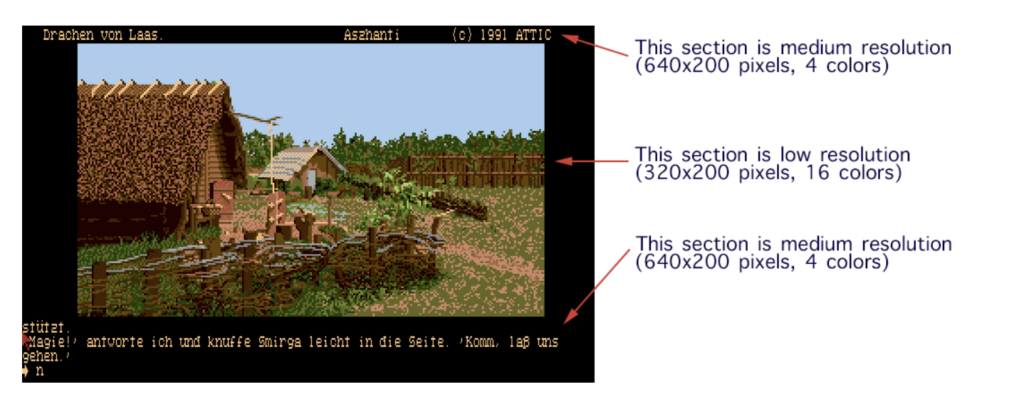
Nun auf dem Atari ST wurde getrickst in Sachen Colors und Screens.
We were mostly on our own, with a piece of hardware before us and very little documentation to show how it worked, what it could do and how to tackle certain problems. As a result, ingenuity and tenacity were as important traits in game developers as programming skills.
[..]
The first thing to understand is that on computers like the Atari ST, we were looking at a fixed hardware platform. Unlike PCs where users could have hundreds of different configurations of graphics cards, soundboards, processors, etc., every Atari ST was internally identical to the next, with the exception of available memory. This, of course, meant that if something worked on my Atari ST, it would also work on all other Atari ST computers, making this kind of experimental programming possible—and very exciting.
The Atari ST had a programmable video chip called Shifter. Through hardware registers, it allowed you to switch the screen mode from low resolution to medium resolution and to a monochrome mode, to adjust the position of the screen on the monitor, etc. However, Shifter and its associated Glue chip also contained a few more obscure registers that went further under the hood and affected things, such as the scanline timing, video synchronization, and so forth.
The key to displaying an image with more than 16 colors, was to, essentially, switch the color palette for every scanline, as the image is displayed
[…]
The palette requirements for that one line are extremely localized and therefore allow me to reproduce more hues of blue, which improves the overall appearance of the sky, in this case. Let me show you this difference in an enlargement.

[…]
used a comparable trick to create the cool effect in the text adventure games to add graphics. The approach was essentially identical to the title screen raster interrupts.